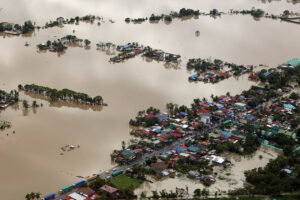THE P750 million in available funding to rehabilitate farmland and fisheries after calamities has been called inadequate given the number of potential claimants, industry officials said.
“The P750 million is good only for 30,000 farmers,” Raul Q. Montemayor, national manager of Federation of Free Farmers, said in a Viber message, noting that some 1.5 million are engaged in rice farming alone.
“I think the better approach is for banks to simplify their lending systems and for government agencies like ACPC (the Agricultural Credit Policy Council) to reduce the risks in lending by subsidizing crop insurance, interest rates and loan guarantee premiums,” he said.
Cristina G. Lopez, deputy executive director of the ACPC, said the P750 million referred to represents the year’s funding for the Survival and Recovery Aid (SURE). This year’s budget is up from P500 million previously.
Asked about the potential mobilization of the funds for El Niño, she said: “Right now, our funds are in position. We have partner banks, and they have the funds we placed with them,” she said by phone.
She added that affected farmers and fisherfolk can readily apply for loans of up to P25,000 with partner banks.
These loans charge zero interest and are payable over three years.
The ACPC’s network of lending conduits consists of rural banks, cooperatives, government financial institutions, non-government organizations, and associations.
Jayson H. Cainglet, executive director of Samahang Industriya ng Agrikultura, said that the level of funding will not cover the typical crop damage inflicted by calamities.
“Maliit ang P25,000 kung damaged crops (P25,000 is a small amount for crop damage). The cost (of production) per hectare for rice is between P65,000 and P75,000… but the crucial factor in loans is that they should be given out immediately, to allow farmers hit by calamities to start again,” he said.
He added that farmers should be given the full amounts requested in the event of El Niño damage.
The Philippines experienced its worst episode of El Niño between 1997 and 1998, when agricultural output contracted 6.67%, according to the Department of Agriculture.
“During that episode, palay (unmilled rice) production reportedly dropped by around 20%. I don’t have data on actual losses and loan defaults, but it must have been massive,” Mr. Montemayor said.
In 2016, the El Niño lasted 18 months, with the resulting drought affecting more than 400,000 farmers tilling 550,000 hectares of farmland, according to the World Bank.
Ms. Lopez said that the ACPC is working with the Philippine Crop Insurance Corp. (PCIC) to implement the SURE program to ensure quick payouts.
Ms. Lopez added that the program offers another calamity loan with a one-year moratorium on amortization.
President Ferdinand R. Marcos, Jr., who also serves as the Secretary of Agriculture, has said that the PCIC’s coverage is insufficient to insure the country’s 2.2 million hectares of agricultural land.
He said that a new approach needs to be developed via the Land Bank of the Philippines (LANDBANK) featuring credit and insurance products for farmers.
“The President ensured that the LANDBANK will become more active and return to its principal mandate as an agricultural bank,” the Philippine Council for Agriculture and Fisheries said in a statement on Thursday. — Sheldeen Joy Talavera






